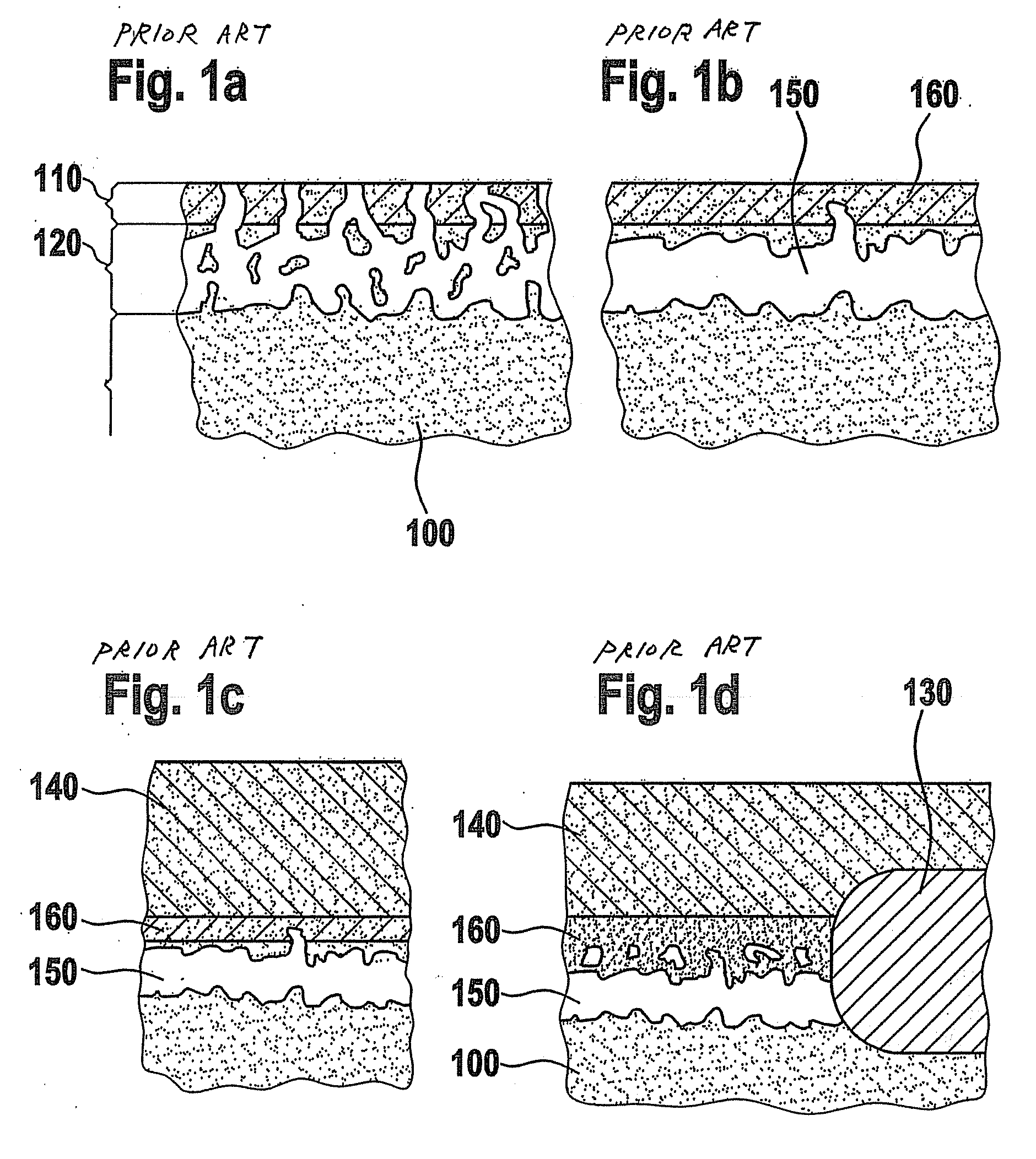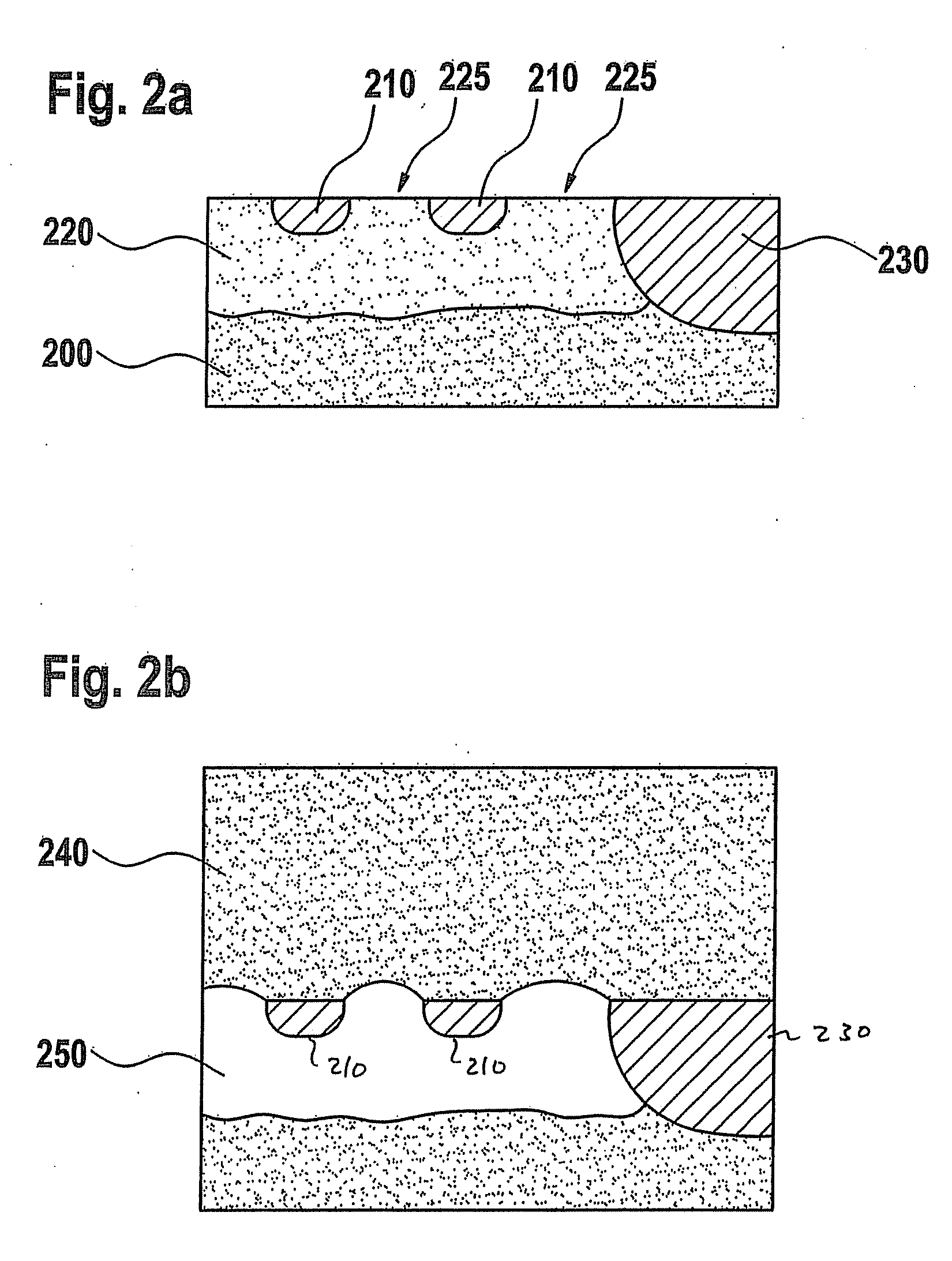Method for manufacturing a semiconductor component, as well as a semiconductor component, in particular a membrane sensor
- Summary
- Abstract
- Description
- Claims
- Application Information
AI Technical Summary
Benefits of technology
Problems solved by technology
Method used
Image
Examples
Embodiment Construction
[0043]As shown in FIG. 1a, a conventional method for producing a membrane provides using a porous double layer in a semiconductor substrate 100, i.e., using a low-porosity layer 110 and a high-porosity layer 120 situated underneath it, it is possible to produce a starting layer 160 that is suitable for the growth of epitaxy layer 140, as well as a cavity 150 (cf. FIG. 1b). The transformation is accomplished by a first annealing step (at approximately 900 to 1000° C.), during which the semiconductor atoms of low-porosity layer 110 relocate in such a way that the surface seals. In the same or in a following annealing step, cavity 150 is then able to be formed as well by relocation of the semiconductor atoms out of high-porosity layer 120. This is accomplished in that the pores enlarge under the influence of the annealing step and finally unite to form a “giant pore,” which then constitutes the cavity. An epitaxy layer 140 may then be deposited on starting layer 160 to produce the memb...
PUM
 Login to View More
Login to View More Abstract
Description
Claims
Application Information
 Login to View More
Login to View More - R&D
- Intellectual Property
- Life Sciences
- Materials
- Tech Scout
- Unparalleled Data Quality
- Higher Quality Content
- 60% Fewer Hallucinations
Browse by: Latest US Patents, China's latest patents, Technical Efficacy Thesaurus, Application Domain, Technology Topic, Popular Technical Reports.
© 2025 PatSnap. All rights reserved.Legal|Privacy policy|Modern Slavery Act Transparency Statement|Sitemap|About US| Contact US: help@patsnap.com



